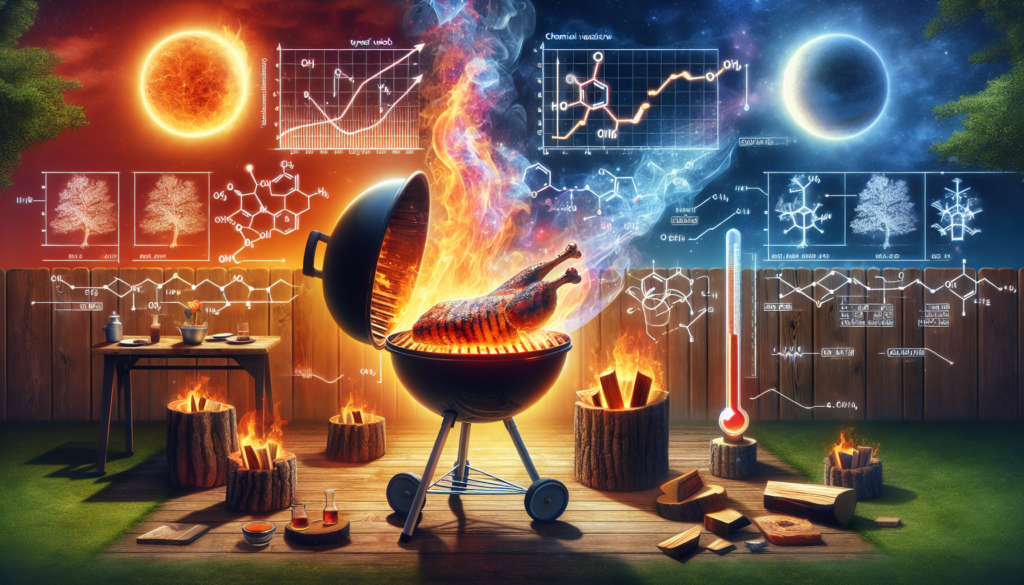In “The Science of BBQ: Understanding Smoke and Heat,” you will discover the fascinating relationship between smoke and heat in the art of barbecuing. Whether you’re a seasoned grillmaster or a curious novice, this article will unravel the secrets behind achieving the perfect smoky and tender meat. From discussing the chemistry of smoke to understanding the role of heat in the cooking process, you’ll gain valuable insights that will enhance your grilling skills and impress your friends and family at your next backyard cookout. Get ready to elevate your BBQ game and become a true master of the grill!
The Science of BBQ: Understanding Smoke and Heat
When it comes to BBQ, smoke and heat are two fundamental elements that play a crucial role in achieving that mouth-watering flavor and texture. Understanding the science behind smoke and heat can elevate your BBQ skills and help you create incredible dishes that will impress your friends and family. So, let’s delve into the world of BBQ science and uncover the secrets behind smoke and heat.

Smoke and its role in BBQ
Smoke is not merely a byproduct of burning wood or charcoal; it is an essential ingredient that contributes to the complex flavors and aromas in BBQ. When wood or charcoal combusts, it releases compounds known as volatile organic compounds (VOCs). These VOCs are responsible for the distinct smoky flavors we associate with BBQ.
The chemistry of smoke
While many components make up the chemistry of smoke, two main compounds significantly impact the flavor of BBQ: phenols and carbonyls. Phenols give BBQ its characteristic smoky taste, while carbonyls contribute to the woody and sweet aromas. Additionally, other compounds, such as aldehydes and acids, add depth and complexity to the flavor profile.
Heat and its effect on BBQ
Heat is another critical element in the BBQ process. It not only cooks the meat but also plays a role in the chemical reactions that occur during cooking. The right amount of heat can result in a crispy exterior, while insufficient heat can lead to undercooked and potentially unsafe meat.
The different types of heat sources
There are various heat sources you can use for BBQ, each with its pros and cons. Traditionalists often opt for charcoal, as it provides a strong, smoky flavor. Gas grills offer convenience and precise temperature control, making them a favorite among many BBQ enthusiasts. Electric smokers offer ease of use, while pellet smokers provide a fusion of charcoal, gas, and electric convenience.

Understanding temperature control
Temperature control is the key to successful BBQ. Maintaining a consistent and appropriate cooking temperature ensures that your meat cooks evenly and to the desired level of doneness. Different meat cuts require different temperatures, so it’s important to invest in a reliable thermometer and learn how to manipulate the heat source to achieve optimal results.
The Maillard reaction and color development
Have you ever wondered why the crust of your BBQ meat has a beautiful brown color and a delightful crunch? It’s all thanks to the Maillard reaction. This chemical reaction occurs between amino acids and reducing sugars when exposed to high heat. It not only enhances the flavor but also gives BBQ dishes their distinctive golden-brown appearance.
The science behind smoke rings
Smoke rings are not only visually appealing but are also regarded as a sign of well-cooked BBQ. Contrary to popular belief, smoke rings are not solely caused by smoke penetration. Instead, they are the result of a chemical reaction between nitrogen dioxide and the myoglobin in the meat, which creates a pink hue known as the smoke ring.
The role of fat in BBQ
Fat plays a vital role in BBQ, contributing to juiciness, flavor, and texture. During the cooking process, fat renders, or melts, releasing moisture and adding richness to the meat. This process also creates a natural basting effect, keeping the meat tender and preventing it from drying out.
The impact of heat on meat tenderness
When it comes to BBQ, achieving tender and juicy meat is a top priority. Heat plays a crucial role in breaking down collagen, a tough protein found in connective tissues. As the meat cooks, collagen transforms into gelatin, resulting in a tender texture and mouthwatering juiciness.
The importance of resting meat
Resting meat after it is cooked is a vital step that should not be overlooked. Resting allows the juices in the meat to redistribute, resulting in a moister end product. It also allows the temperature to even out, ensuring a consistent level of doneness throughout the meat. So, be patient and let your BBQ creations rest before diving in.
By understanding the science behind smoke and heat, you can elevate your BBQ game and create masterpieces that will tantalize your taste buds. So, fire up that grill, experiment with different wood and heat sources, and let the science of BBQ guide you towards culinary perfection. Happy grilling!

